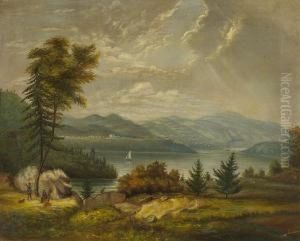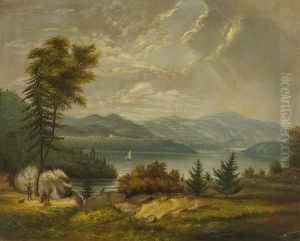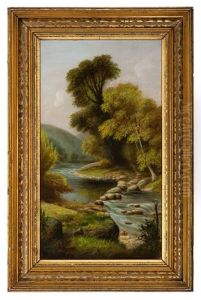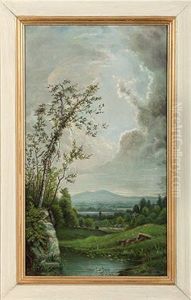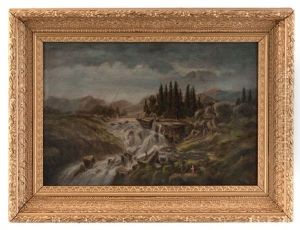Marcus Mote Paintings
Marcus Mote, born in West Milton, Ohio, in 1817, was an American artist of considerable versatility and talent, whose contributions spanned various domains of creativity, including painting, drawing, and even pioneering efforts in photography. Raised in a Quaker family, his upbringing was steeped in a culture that valued simplicity, a trait that subtly influenced his artistic endeavors throughout his life. Despite the limited formal education opportunities available to him, Mote's passion for art was evident from an early age, leading him to pursue a largely self-taught career in the arts.
Mote's early career was marked by his work as a portrait painter, a common entry point for many artists of his time. His itinerant lifestyle saw him traveling across Ohio, capturing the likenesses of local residents and gradually building a reputation for his keen eye and faithful renditions. However, Mote's interests and contributions were not confined to portraiture alone. He was deeply engaged in the broader cultural and technological developments of his era, notably including the nascent field of photography. Mote was among the early adopters of daguerreotype photography in the United States, experimenting with this new form to capture images with a precision and detail that painting could not always achieve.
Beyond his work in portraiture and photography, Mote's oeuvre also included religious and allegorical paintings, reflecting his deep personal faith and the broader mid-19th century American interest in spiritual and moral themes. One of his most significant works in this genre is his depiction of the biblical story of Esther, showcasing his capacity to handle complex compositions and his sensitivity to narrative and emotional depth.
In addition to his artistic pursuits, Marcus Mote was also an educator, sharing his knowledge and skills with the next generation of artists. He moved to Richmond, Indiana, where he became a respected figure not just for his artistic contributions but also for his role in the cultural and educational life of the community. His legacy is closely tied to the development of the arts in Indiana during the 19th century, marking him as a pivotal figure in the state's artistic heritage.
Mote passed away in 1898, leaving behind a body of work that, though perhaps not as widely recognized as some of his contemporaries, offers a rich window into the artistic, cultural, and technological shifts of 19th-century America. His dedication to exploration and experimentation across different mediums underscores his importance as an artist who bridged the traditional and the modern, contributing significantly to the American art scene of his time.
